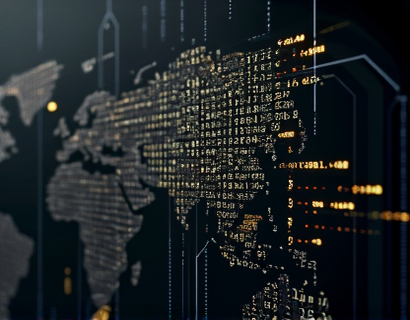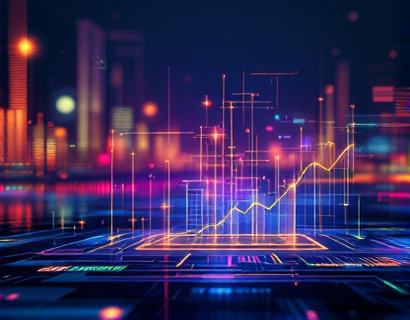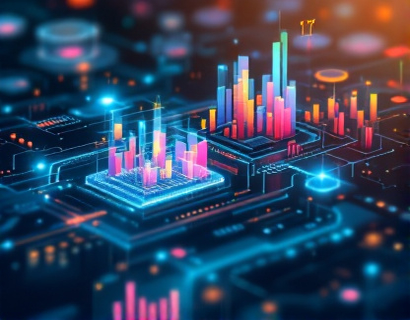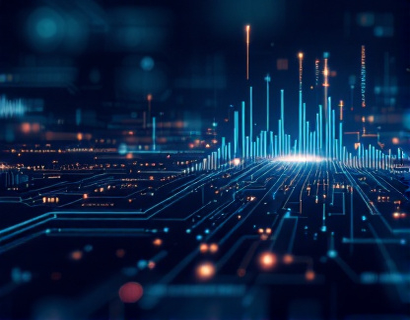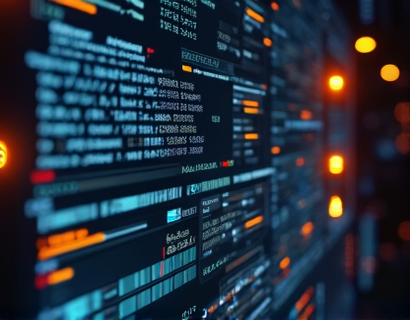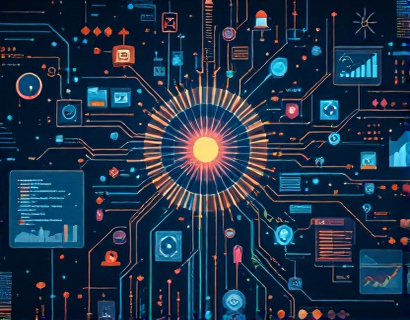The Convergence of AI and Crypto: Revolutionizing Financial Services
The intersection of artificial intelligence and cryptocurrency is ushering in a new era of financial innovation. This convergence is not just a technological curiosity but a transformative force that is redefining the landscape of financial services. As we delve into this topic, it's essential to understand the fundamental roles that AI and crypto play individually and how their union is creating unprecedented opportunities in the digital realm.
Artificial intelligence, with its ability to process vast amounts of data at unprecedented speeds, has become an indispensable tool across various industries. In the financial sector, AI has been leveraged for everything from fraud detection to algorithmic trading. Its predictive capabilities and pattern recognition skills make it a powerful ally for financial institutions seeking to stay ahead in a competitive market.
Cryptocurrency, on the other hand, represents a paradigm shift in how we think about money and transactions. Born out of the need for a decentralized, transparent, and secure form of currency, crypto has gained significant traction since its inception. The underlying blockchain technology ensures transparency and immutability, making it an attractive solution for a wide range of applications beyond just digital currency.
The combination of AI and crypto is particularly potent because it harnesses the strengths of both technologies. AI can enhance the security, efficiency, and usability of crypto assets, while crypto provides a decentralized and transparent environment for AI algorithms to operate. This synergy is driving the development of intelligent crypto solutions that are reshaping digital finance.
Enhancing Security with AI
One of the primary concerns in the crypto space is security. Traditional financial systems have robust security measures, but the decentralized nature of crypto introduces new vulnerabilities. AI can significantly bolster security by detecting and mitigating threats in real-time. Machine learning algorithms can analyze transaction patterns to identify anomalies that may indicate fraudulent activity.
For instance, AI-powered systems can monitor blockchain transactions and flag suspicious behavior, such as unusual transaction volumes or patterns that deviate from the norm. These systems can adapt and learn from new data, continuously improving their ability to detect and prevent fraud. This proactive approach to security is crucial in maintaining trust in crypto assets.
Moreover, AI can enhance the security of crypto wallets and exchanges. By implementing biometric authentication and behavioral analysis, AI can ensure that only authorized users access sensitive information. This multi-layered security approach not only protects users' assets but also complies with regulatory requirements, which are increasingly focusing on cybersecurity.
Optimizing Trading Strategies with AI
Algorithmic trading has been a staple in traditional finance, but AI takes this to a whole new level. In the crypto market, where price volatility is the norm, AI-driven trading strategies can capitalize on fleeting opportunities. These algorithms can process vast amounts of data, including market news, social media sentiment, and historical price data, to make informed trading decisions.
Machine learning models, such as neural networks and decision trees, can identify complex patterns and correlations that human traders might miss. This capability allows for more precise and timely trades, potentially leading to higher returns. Additionally, AI can manage risk by dynamically adjusting positions based on market conditions, ensuring that portfolios remain balanced and resilient.
The use of AI in crypto trading also extends to arbitrage opportunities. By analyzing multiple exchanges simultaneously, AI can spot price discrepancies and execute trades to exploit these differences. This strategy can generate consistent profits, especially in highly liquid markets like crypto.
Improving User Experience through AI
Beyond security and trading, AI is transforming the user experience in the crypto space. User interfaces powered by AI can provide personalized recommendations and insights, making the complex world of crypto more accessible to newcomers. Chatbots and virtual assistants can answer common questions, guide users through transactions, and offer real-time support, enhancing the overall user experience.
Portfolio management tools driven by AI can analyze a user's financial goals and risk tolerance to create customized investment strategies. These tools can automatically rebalance portfolios, ensuring that users stay aligned with their objectives. By simplifying the investment process, AI makes crypto more approachable and user-friendly.
Furthermore, AI can facilitate better communication between different crypto assets and traditional financial instruments. By integrating AI-driven analytics with crypto and fiat markets, users can gain a comprehensive view of their financial landscape, making more informed decisions.
Decentralized Finance (DeFi) and AI
Decentralized Finance, or DeFi, is an emerging field that leverages blockchain technology to create financial services without intermediaries. AI plays a crucial role in enhancing DeFi platforms by improving their functionality and user experience. For example, AI can optimize lending and borrowing protocols by predicting default risks and adjusting interest rates accordingly.
Smart contracts, the backbone of DeFi, can be enhanced with AI to automate complex financial operations. AI algorithms can execute conditional logic with greater precision and speed, reducing the risk of errors and increasing efficiency. This automation not only lowers costs but also makes DeFi more accessible to a broader audience.
Another exciting application of AI in DeFi is the creation of AI-driven yield optimization tools. These tools analyze various DeFi protocols to identify the most profitable opportunities for users, automatically reallocating funds to maximize returns. This level of automation and optimization is transformative for users looking to earn passive income in the crypto space.
Cross-Chain Interoperability and AI
As the crypto ecosystem grows, the need for cross-chain interoperability becomes increasingly important. AI can play a pivotal role in facilitating seamless interactions between different blockchain networks. By analyzing data from multiple chains, AI can identify the most efficient pathways for asset transfer and data exchange.
Interoperability protocols powered by AI can ensure that transactions are secure, fast, and cost-effective. This is particularly crucial for users who want to leverage the strengths of different blockchains, such as Ethereum's smart contract capabilities and Bitcoin's robust security. AI-driven solutions can bridge these gaps, creating a more cohesive and interconnected crypto ecosystem.
Moreover, AI can enhance the development of cross-chain applications by providing insights into the unique characteristics and limitations of different blockchains. This knowledge can guide developers in creating more efficient and user-friendly applications that take full advantage of the decentralized landscape.
Challenges and Considerations
While the integration of AI and crypto offers numerous benefits, it also presents several challenges. One of the primary concerns is the regulatory landscape. As AI and crypto continue to evolve, regulators are grappling with how to oversee these technologies to prevent misuse and ensure consumer protection.
Another challenge is the technical complexity involved in developing AI-powered crypto solutions. Building robust and reliable systems requires expertise in both AI and blockchain technology, which can be a barrier for some developers. Additionally, the computational resources required for training AI models can be substantial, raising concerns about energy consumption and environmental impact.
Despite these challenges, the potential benefits of AI in the crypto space are undeniable. As the technology matures and regulatory frameworks evolve, we can expect to see more innovative solutions that further integrate AI and crypto, driving financial innovation in the digital age.
Conclusion
The convergence of AI and crypto is a game-changer for the financial industry. By enhancing security, optimizing trading strategies, improving user experience, and enabling decentralized finance, this partnership is opening new avenues for interaction and management in the digital realm. As we look to the future, the continued evolution of these technologies promises to bring even more transformative changes, solidifying their role as key drivers of financial innovation.



